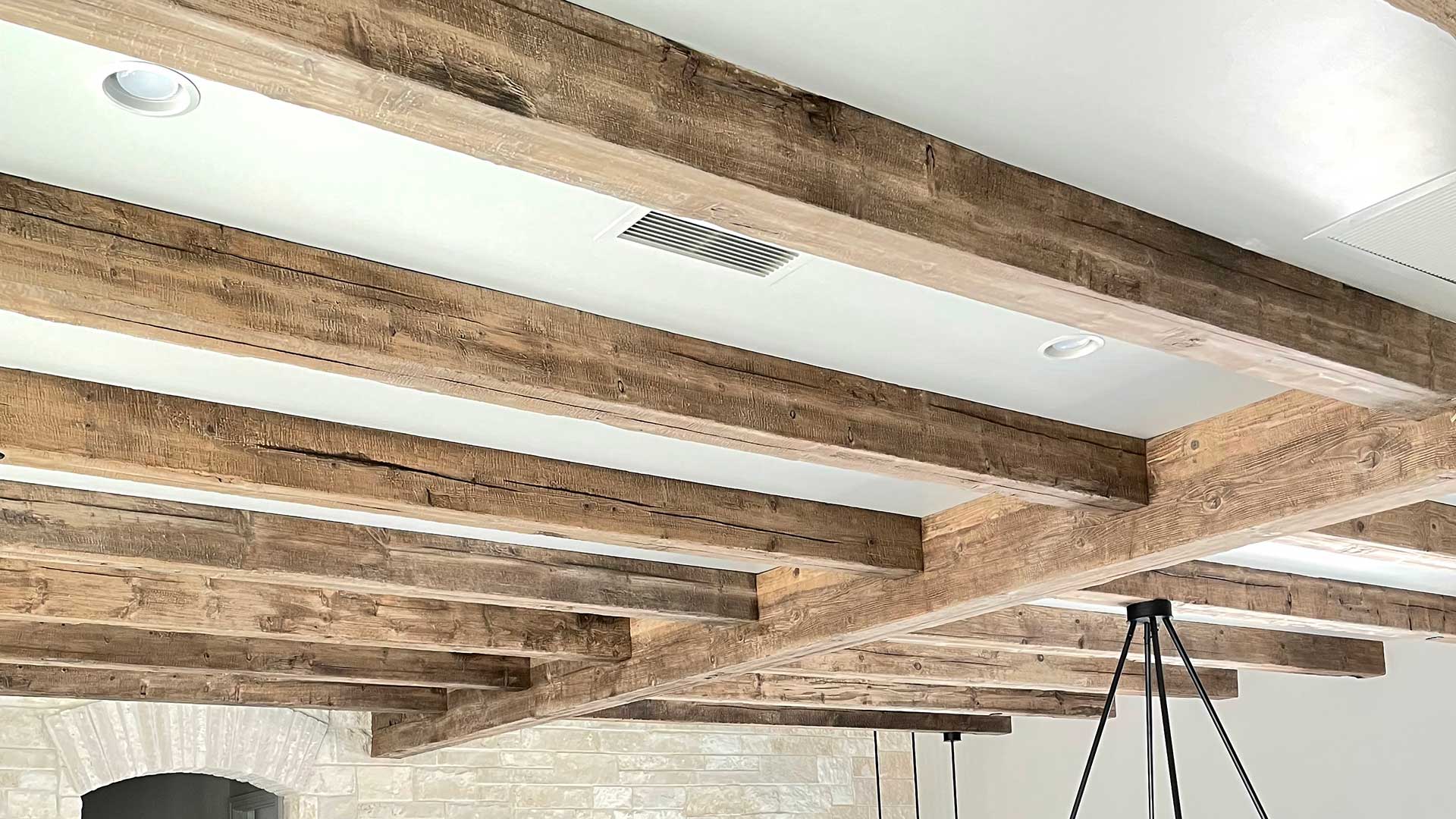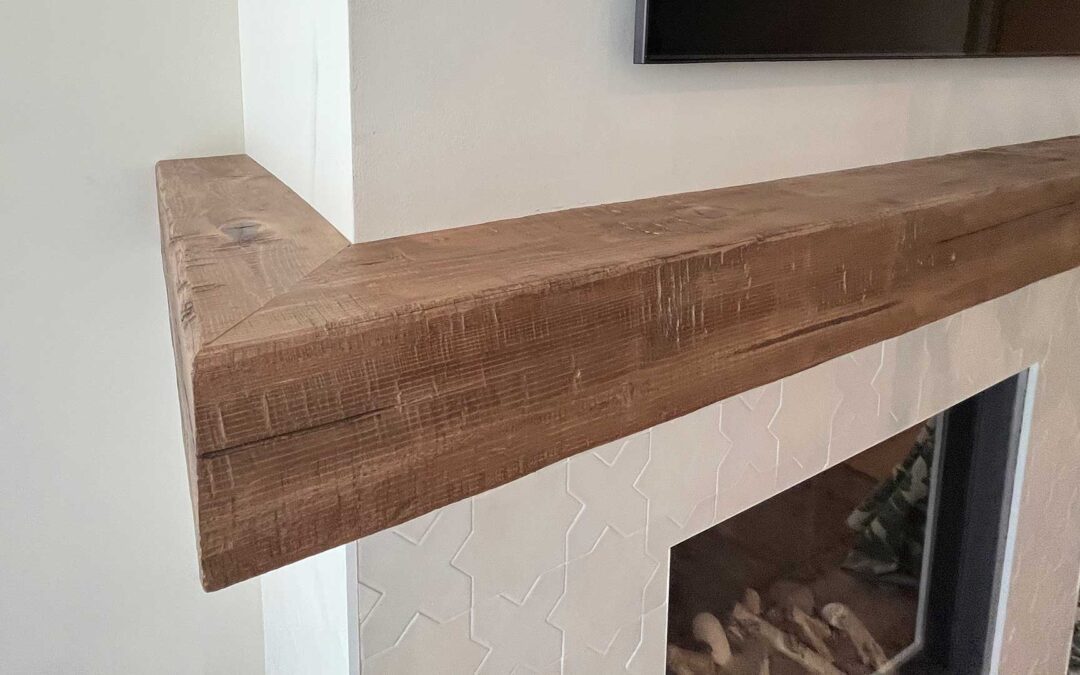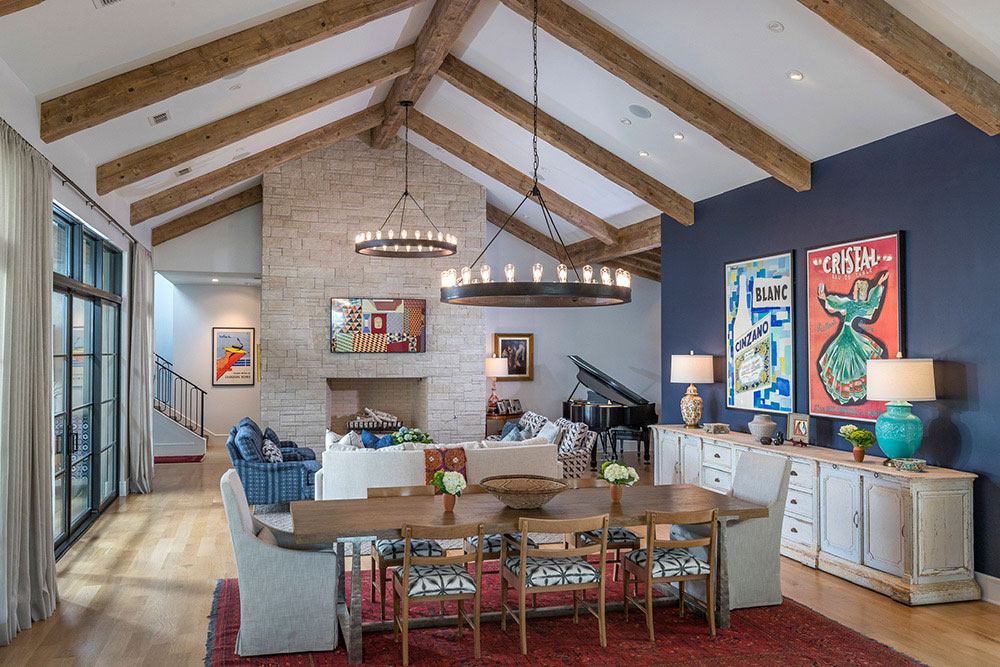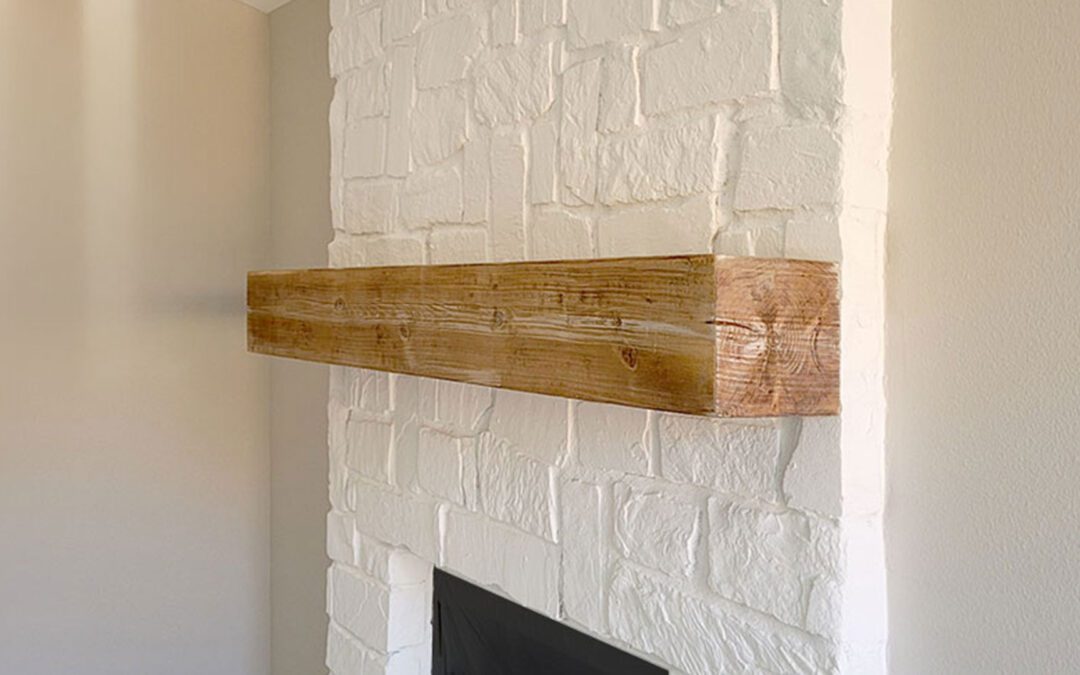When it comes to enhancing the architectural appeal of a space, ceiling beams are a popular choice among homeowners, designers, and builders. They add character, dimension, and a sense of craftsmanship to any room. However, with various types available—such as hollow box beams, solid wood beams, reclaimed wood beams, and faux wood beams—choosing the right type can be daunting. In this blog, we’ll explore these options, focusing on the benefits of hollow box beams made of real wood, while also considering the alternatives so you can make an informed decision.
Hollow Box Beams: The Lightweight Champion
Hollow box beams are a modern solution for achieving the aesthetic of traditional beams without the structural weight. These beams are constructed from real wood and hollowed out to reduce weight, making them easier to install and manage. Ideal for decorative purposes, they offer a versatile and adaptable option for enhancing interiors without the need for extensive structural support.
Pros
Lightweight
Hollow box beams are significantly lighter than solid beams, which makes them easier to install and suitable for locations where the structural support for heavier beams is inadequate.
Customizable
These beams can be tailored in various ways—size, color, finish, and even the type of wood. They offer flexibility in design that is often needed in custom projects.
Functional
Hollow beams are excellent for concealing wiring or pipes, thus contributing to a cleaner look while adding functionality.
Cost-effective
Generally, because they require less material and are easier to transport and handle, hollow beams can be more cost-effective than solid wood beams.
Cons
Durability
While they are durable, they don’t support structural loads, which might be a requirement in some architectural projects.
Perception
Some clients may prefer the authenticity of solid wood, viewing hollow constructions as less “genuine.” But really, who’s going to know?
Solid Wood Beams: The Traditional Choice
Solid wood beams are often the go-to choice for those seeking a classic, robust architectural element. These beams are made from a single piece of wood, providing not only a strong visual impact but also the potential for structural support in building designs.
Pros
Strength and Durability
Solid wood beams are strong and can support large amounts of weight, making them suitable for structural purposes as well as aesthetic ones.
Aesthetic and Authenticity
There’s an undeniable charm and warmth to solid wood, which can add significant value and appeal to properties, especially in rustic and traditional designs.
Cons
Weight
The considerable weight of solid wood beams requires adequate structural support from the building, which can complicate installation and increase costs.
Cost
Due to the amount of high-quality wood used, these beams are generally more expensive.
Inflexibility
Solid beams offer less flexibility for modifications and installations involving utilities.
Reclaimed Wood Beams: Eco-Friendly with a Story
Reclaimed wood beams carry the allure of history and sustainability. These beams are salvaged from old buildings, barns, and other structures, providing an eco-friendly option that brings unique stories and textures into modern spaces.
Pros
Eco-friendly
Using reclaimed wood is environmentally friendly as it recycles old material, preventing the need for new trees to be cut down.
Unique Aesthetic
Each piece has a history and offers a unique, aged look that can’t be replicated, adding a sense of authenticity and character to your space.
Cons
Availability
Finding the right size and type can be challenging, as available materials can vary widely.
Cost
Often, reclaimed wood can be more expensive due to the labor involved in refurbishing it, and its uniqueness can also drive up the price.
Potential for Damage
Older wood may come with imperfections, which can include structural weaknesses, pests, or rot if not properly treated.
Faux Wood Beams: The Imitator
Faux wood beams provide a practical and versatile alternative to real wood, made from materials such as high-density foam or polyurethane. These beams are designed to imitate the look of wood while offering easier installation and maintenance.
Pros
Highly Versatile
Made from lightweight materials like high-density foam, faux wood beams can be installed almost anywhere and are available in a wide range of styles and colors.
Cost-Effective
They are generally less expensive than real wood beams and don’t require specialized labor for installation.
Cons
Aesthetic Quality
While modern faux beams can be strikingly realistic, they can still lack the subtle textures and deep character of real wood.
Durability
They are not as durable as real wood and may not add the same value to a property.
Choose what is right for your project.
The right type of ceiling beam for your project depends on a variety of factors including aesthetic preference, structural requirements, budget, and installation considerations. Hollow box beams stand out as a versatile and practical option for most decorative applications, offering both beauty and functionality. When planning your next project, consider how the characteristics of each beam type align with your design objectives and practical needs.
By understanding the pros and cons of each type of beam, you can make a choice that enhances your space’s design while fitting seamlessly into the architectural requirements and your project’s budget.
Hollow box beams are our top choice!
At Green Valley Beams & Truss, we specialize in crafting high-quality hollow box beams that offer the aesthetic appeal of solid wood without the drawbacks. Our beams are designed to be both functional and beautiful, providing the perfect blend of traditional craftsmanship and modern convenience. They are an excellent choice for anyone looking to add the timeless look of beams without the structural weight and complexities associated with solid wood.
If you’re in the Dallas/Fort Worth area of Texas, contact us today to explore our products and customization options. Let us help you seamlessly integrate these beautiful beams into your project, enhancing both its aesthetics and functionality.




